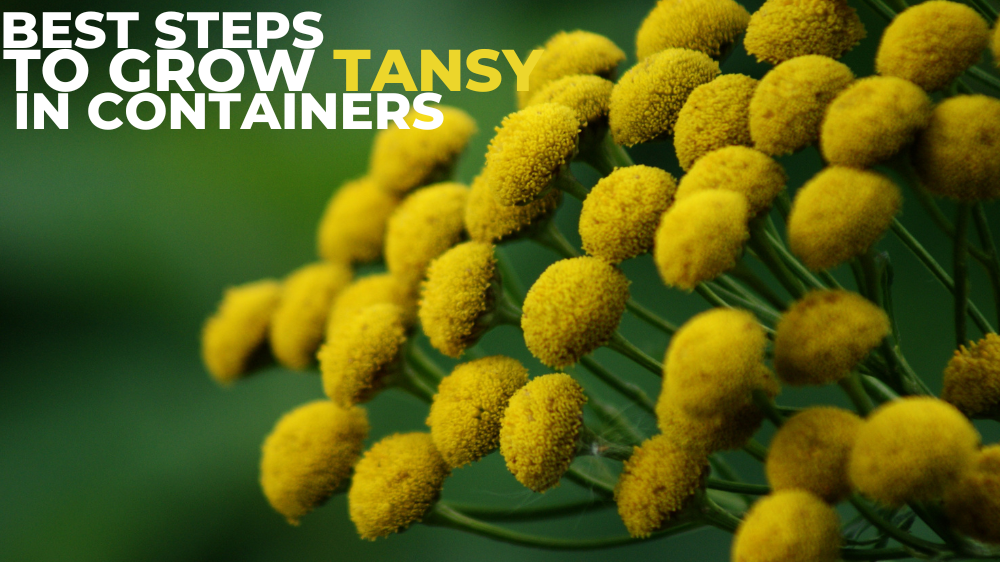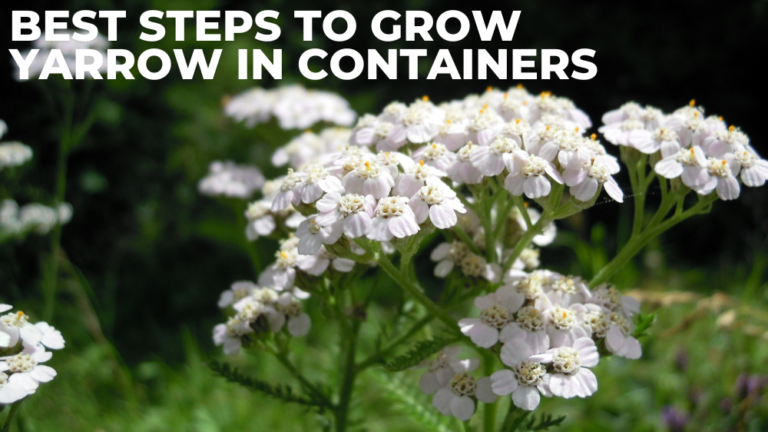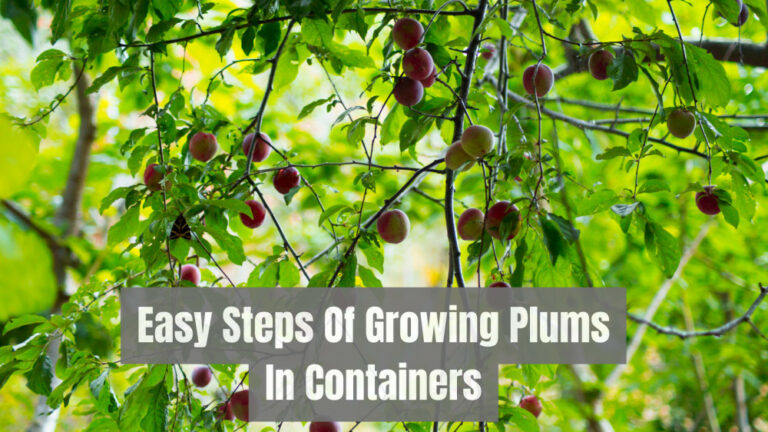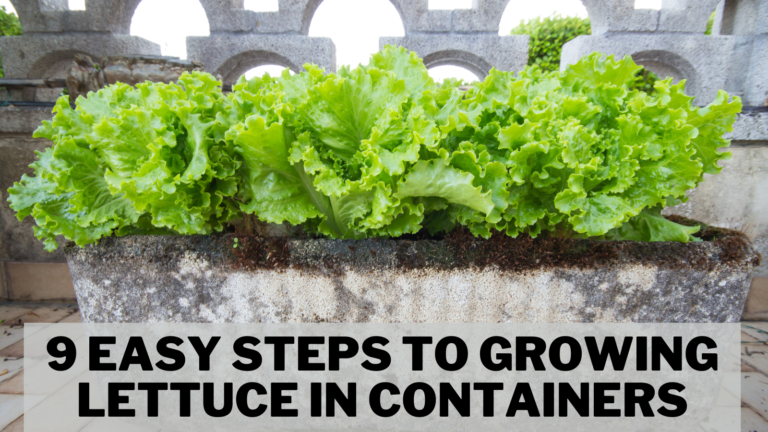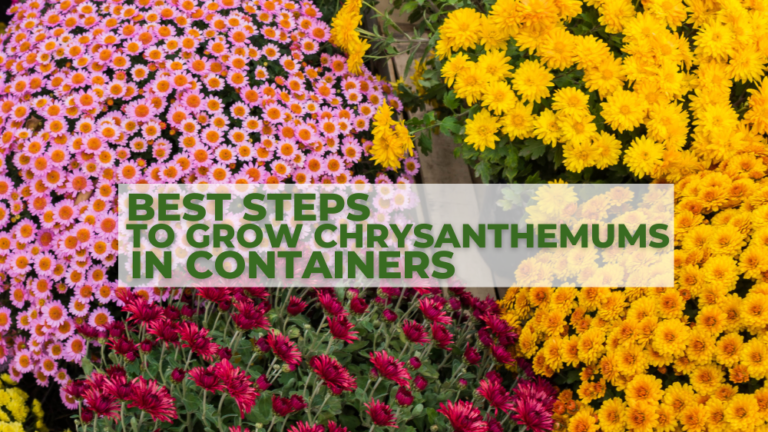Best Steps To Grow Tansy In Containers
Best Steps To Grow Tansy In Containers
Tanacetum vulgare can grow in the wild across much of North America. Although it has been designated as a noxious weed in certain places, it is a perennial plant that is simple to grow once you know how to stop it from spreading.
It's interesting to learn where the name Tanacetum vulgare came from. Athanasia, which means “no death” or “immortality,” is the root of the Latin word tanacetum. This is because dried flowers can remain for many years, and the plant can last very long.
Tansy has some drawbacks, such as being occasionally viewed as an invasive weed and having potential health risks.
Still, we can quickly overcome these minor obstacles with some information and consideration.
In our common tansy guide, we hope to inspire you to grow tansy in containers in your garden by giving you a ton of information and ideas.
History And Origin Tansy
A flowering herbaceous plant known as tansy (Tanacetum vulgare) is used for therapeutic and cultural purposes.
The fragrant plant has fern-like foliage, yellow button-like flowers, and a height up to 5′.
Some people value Tansy for its cuisine, ceremonies, and healing usage, but others see it as a noxious weed.
Here, we'll cover everything you need to know about tansy flower meaning and symbolism, their origins and history, applications and advantages, and the finest occasions to give them as gifts in the present.
The tansy flower represents defence, health, resistance, and immortality because its name implies “immortality.”
Giving a tansy plant a gift can also represent the recipient's desire for wellness. Giving someone a tansy flower may even be considered an unofficial declaration of war because tansies can symbolize hostile thoughts.
A flowering herbaceous tansy plant has compound leaves with fine divisions and yellow button-like blooms. Its thick stem, which ranges from 50 to 150 cm, braces toward the top.
The stem's surface usually has a smooth texture and a somewhat crimson hue. The leaves alternate and can grow up to 5.9 inches long.
Tansy leaves have seven pairs of nearly parallel lobes that divide again into smaller lobes with saw-toothed edges, giving the leaf its distinctive fern-like appearance.
Tansy leaves are pinnately lobed. Yellow, somewhat rounded, flat-topped, and button-like describe tansy flowers.
Terminal clusters of flower heads develop from mid-to-late summer. These flowers have a perfume that is highly reminiscent of camphor but also contains undertones of rosemary.
Tansy was probably initially cultivated as a medicinal herb by the ancient Greeks. By the eighth century, it had appeared in the herb gardens of Charlemagne and the Benedictine monks of the Swiss monastery of Saint Gall.
Tansy was then administered and used by healers and common gardeners to treat intestinal worms, rheumatism, digestive issues, fevers, and sores.
Tansy was used in large dosages to induce abortions starting in the Middle Ages. Tansy was also used to help women get pregnant and prevent miscarriages.
By the 16th century, tansies were considered an essential component of every garden in Britain. Tansy has become popular as a face cleanser since it may brighten and purify the skin.
In the 19th century, Irish legend recommended bathing in a tansy and salt solution to relieve joint discomfort.
Types Of Tansy
There are now just three primary cultivars of the tansy plant, possibly because of its poisonous and aggressive growth traits.
However, they have excellent ornamental value and appear lovely in gardens due to their gorgeous, button-like yellow flowers.
Look at the most typical and well-liked tansy plant varieties with beautiful applications and advantages.
1. Common Tansy
As the name implies, this variety of tansy plants is the most widespread and well-liked one indigenous to Eurasia.
It was first brought to the United States as an attractive plant in the 1600s but was mostly planted for its therapeutic properties.
Over the years, the plant spread from the east coast to the west after becoming a native.
Common tansy is a perennial plant that generally reaches heights of 3 to 4 feet, but with the appropriate growing conditions, it can grow as high as 6 feet.
It spreads from a cluster and has numerous stems. As a result, it greatly resembles a bush.
This species of tansy releases an oddly potent, intense kind of fragrance. This species of tansy has the peculiar property of emitting a highly potent, pungent-like odour when crushed.
The common tansy produces yellow flowers that resemble button-shaped buttons and alternating leaves that strongly resemble fern leaves between the middle of July and the end of September.
2. Curly Leaf Tansy
This kind of tansy is a close relative of the Common Tansy plant and is also known as “fern-leaf tansy.”
Its leaves are quite large and broad and often reach 2 to 3 feet. Its leaves are finer cut and more down-curving than the ordinary tansy.
The curly leaf tansy is a relatively dense plant with outstanding ornamental qualities. It is a perennial plant with yellow, button-shaped flowers resembling the common tansy.
The bright green leaves with a very fluffy look contrast sharply with the yellow blossoms. Touching the leaves releases a pleasant, aromatic perfume as well.
The curly leaf tansy's summer flowering season starts with primarily deciduous flowers. This tansy type has many uses and is less invasive than its cousin.
It needs regular to infrequent watering and does best in full sun to light shade. It is highly drought-tolerant, yet to thrive, it needs flexible soils and good drainage.
3. Golden Buttons Tansy
The Golden Buttons Tansy, or Tanacetum vulgare ‘Isla Gold,' is a tall, robust plant with dark green foliage reaching around 1.2 meters.
This kind of tansy frequently grows near a river in Shelburne Falls, Massachusetts. The magnificent foliage of this species, which has lovely brilliant yellow, fern-like leaves that are fairly scented, makes it so popular.
The stunning hue of the foliage makes a significant impression even from a distance. Additionally, it harmonizes flawlessly with all of the other hues that are frequently seen in gardens.
The golden button tansy plant spreads out to about 24 inches and grows to an average height of 3 feet.
Grow Tansy In Containers
Tansy (Tanacetum vulgare), a perennial herb native to Europe, has a long history of usage in alternative medicine.
It has spread naturally across most of North America, and in states like Colorado, Montana, Wyoming, and Washington State, it is even regarded as a noxious weed.
Despite this, tansy is a charming tiny plant that enriches the soil with potassium and wards off various bothersome bug species.
The least of your concerns will be figuring out how to produce tansy after you get tansy seeds. As a prolific reseeder, this plant can annoy some gardens.
Choose The Right Container
Go porous is the suggestion we offer. Plastic pots won't dry uniformly as porous ceramics like terracotta, and any wood planter will dry much more quickly than terracotta.
Ceramic planters are another excellent option. Additionally, fibreglass planters are perfect for plants with a diameter of 8″ or greater if weight is a concern.
Polyethylene plastic bags, clay pots, plastic pots, metallic pots, milk jugs, ice cream containers, bushel baskets, barrels, and planter boxes are just a few of the container types used for producing vegetables.
Soil To Grow Tansy In Containers
Common tansy prefers soil that drains well and has a pH range of 4.8 to 7.5. This broad range indicates that the tansy may thrive in several soil types.
It is best to evaluate its pH to ensure that your soil is neither overly acidic nor alkaline. Although it can withstand poor soil, we advise composting fertile garden soil for the healthiest plant.
Plant Tansy
Before planting tansy, be sure it is not an invasive weed that is outlawed in your area. Once everything is clear, you could want to plant tansy inside or in a container to limit its spread.
Tansy plants can spread out of control rather quickly due to the subsurface growth of their rhizomes and their propensity to self-seed on the soil's surface.
Gardeners frequently start with a tansy plant they've bought from a nursery or garden center.
If tansy is widespread where you live, you might be able to dig up a wild plant to plant in your garden. If you do, be certain that the plant and the soil it grows in are free of illness.
If you want to be extra cautious, you can quarantine the plant and keep an eye on it for a while to ensure it's healthy before putting it in its permanent location in your yard. You can also grow your tansy from seed. Tansy has a propensity to spread quickly.
Therefore, starting with one plant is advised unless you have some high-volume intentions for your plants. If you want to keep your tansy under control, you can think about putting it in a location where you can mow around it.
Light & Temperature For Tansy
The tansy can thrive in some shade, but it prefers full sun. It can withstand USDA zones 4 through 8, and with adequate winter protection, it could endure zone 3.
It is a resilient winter and summer perennial that can flourish in various temperatures. Tansy does not thrive in extended periods of intense heat or extreme cold.
Water & Humidity
Once your tansy has grown, it can withstand drought without a problem. This makes it the ideal plant to cultivate, where it won't get as much water as other plants, such as the edges of your yard.
Before it becomes too hot, early in the morning is the best time to water. Water it thoroughly with a garden hose and let the soil dry between applications. You can also choose soaker hoses or drip irrigation.
Water it more frequently during the summer months during the first year, but depending on the temperature, it just needs a nice soak once or twice a month.
Tansy should not be overwatered as this could prevent the rhizomes from establishing themselves and cause serious problems.
The common tansy has the advantage of being able to endure both humid and dry temperatures as long as they are not excessive.
Fertilizer
Tansy does not require a high amount of fertilizer. Poor soils may need a general all-purpose fertilizer applied once or twice during the growing season.
When growing tansy in a container, you have more control over the soil quality, so it will require less fertilizer application.
Observe how well your tansy is growing, and add fertilizer as needed. Generally, the more fertilizer you add, the more it grows and expands.
This can be seen as positive or negative depending on your reasons for having this plant in your garden.
Repotting Tansy Plants
Tansy should be replanted every year in a container using an all-purpose potting soil with good drainage.
It can thrive in poor soil, as was already noted, but it's best to create a favourable growing environment for the healthiest tansy.
Propagation Tansy
Tansy seeds can be started indoors 6–8 weeks before the final frost or planted directly into the ground in the fall to allow for cold stratification.
You won't need to worry about running out of these blooms in your garden if you let the common tansy flower self-seed aggressively, but keep in mind that it will progressively grow and potentially take over.
Keep in mind that it can also spread via rhizomes that grow underground. In the fall, these plant colonies are simple to divide.
Pruning Tansy
To maintain a whole and compact tansy cluster, prune the plant each spring. To stop seeds from spreading, harvest blossoms all during the season and deadhead the plant as they start to fade.
Additionally, deadheading promotes the later-season blooming of more flowers. Cut the leaf clusters in late summer to postpone, spread, or stop flowering.
Cut the dead blooms off before the cold season if you don't want them to spread because the seed heads will remain through the winter.
Always wear gloves when working with tansy when pruning; just be careful. It includes thujone, a naturally occurring substance that can make some people develop contact dermatitis.
Pests & Diseases Of Tansy
Tansies are susceptible to aphids, insect pests that can affect many plants. This pest resides beneath the plant's fern-like leaves and feeds on all the juices.
Large infestations can impede growth, causing the leaves to become yellow and even causing the leaves to fall off.
You can use an insecticidal soap spray or a neem oil spray to get rid of these little pests from your plant naturally. Think about using an organic pyrethrin spray when dealing with nasty infestations.
A spider mite is an insect that consumes the fluid found in each plant cell. The spider mites can only be seen under a magnifying glass, but you can tell them apart from other mites and aphids by looking for webs.
They also enjoy settling on the fern-like leaf's underside, which eventually causes the leaves to develop brown and white blotches.
You can eliminate the afflicted plant if it hasn't spread to nearby tansy plants. Neem oil spray or a natural insecticidal soap will work if that isn't the case.
Harvesting Tansy
Tansy plants can have their leaves and flowers harvested. Tansy can be used as an insect repellant but can also be added in small amounts to food dishes.
Tansy is a plant that naturally repels pests, but it can also be harvested, made into a liquid, and sprayed around the garden.
To do this, harvest the plant's leaves and flowers from June to September, when they are in bloom.
Spray the garden with a mixture of steaming water and dehydrated tansy. Tansy leaves can be collected and hung inside as a fly deterrent. Tansy flowers and leaves can also be used to make coloured dyes.
Ornamental And Other Uses Of Tansy
Frances Bardswell stated in The Herb Garden, first published in 1911, “We think the Tansy too much of a vagrant to be allowed a footing in the Herb garden,” and many gardeners would concur.
Others would add tansy because of its cultural significance or because they like how it looks.
The best location is toward the back of the herb bed, close to a wall or fence that will prevent its tall stems from toppling over in wind and rain.
The fern-leaf tansy's lush green leaves look equally at home in a perennial bed or herb garden. Even plants can be cut to create a low hedge.
The fern-leaf tansy complements the gray foliage of the horehound in the back of the border, along with the mugwort, valerian, fennel, and dill.
For smaller white or yellow flowers, it provides a lovely backdrop. Tansy works well with wormwood, blue sage, and valerian to create a fragrant garden.
Tansy flowers are highly prized because they last long in dried arrangements. You can make potpourirs and sachets using dried flowers and leaves.
Most likely, you'll grow tansy better than you could have imagined. What can you do with the plants besides giving them to friends and neighbours who might not appreciate your generosity?
Adding more plants to your compost pile can enrich it with potassium. You can make a tansy tea by adding a few leaves to a pint of boiling water. Once the tea has cooled, you can water your indoor plants. A beneficial herb!
Conclusion
There isn't enough solid scientific evidence to support the use of tansy for conditions like stomach and intestinal ulcers, gallbladder conditions, migraines, nerve pain, joint pain, and many other conditions. Tansy use could have toxic effects as well. So don’t miss to grow tansy in containers.
I trust you enjoyed this article on the Best Steps To Grow Tansy In Containers. Please stay tuned for more blog posts to come shortly. Take care!
JeannetteZ
>>>Please click here to read my all-inclusive article about Container Gardening<<<
>>>Are you interested in homegrown herbs and medicine? Please click here to find out more about it!<<<
Your Opinion Is Important To Me
Thoughts? Ideas? Questions? I would love to hear from you. Please leave me your questions, experience, and remarks about this article on the Best Steps To Grow Tansy In Containers in the comments section below. You can also reach me by email at Jeannette@Close-To-Nature.org.
Disclosure
This post may contain affiliate links. As an Amazon Associate and other affiliate programs, I earn from qualifying purchases at no extra cost to you. Read my full affiliate disclosure.
You might also enjoy these blog posts:
Best Steps To Grow Milkweed In Containers
Best Steps To Grow Bluebells In Containers
Best Steps To Grow Flax In Containers
Best Steps To Grow Cauliflower In Containers
Best Steps To Grow Lentils In Containers

